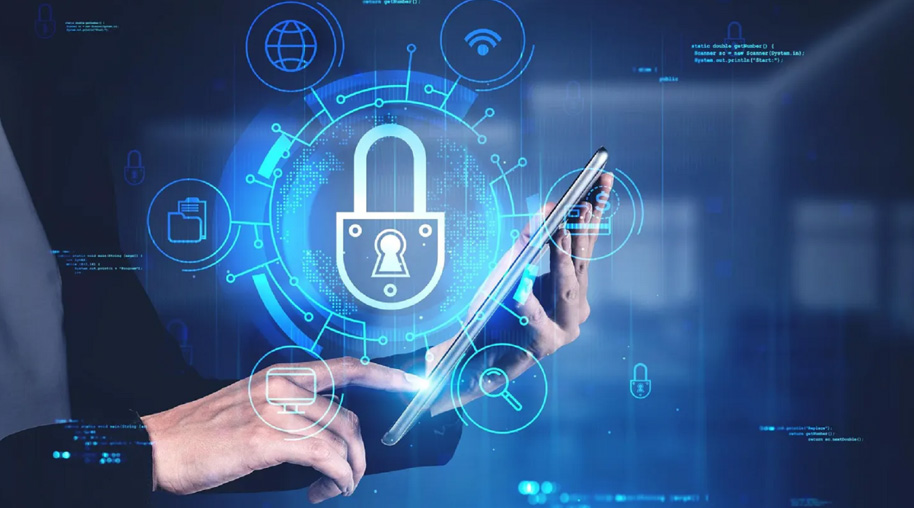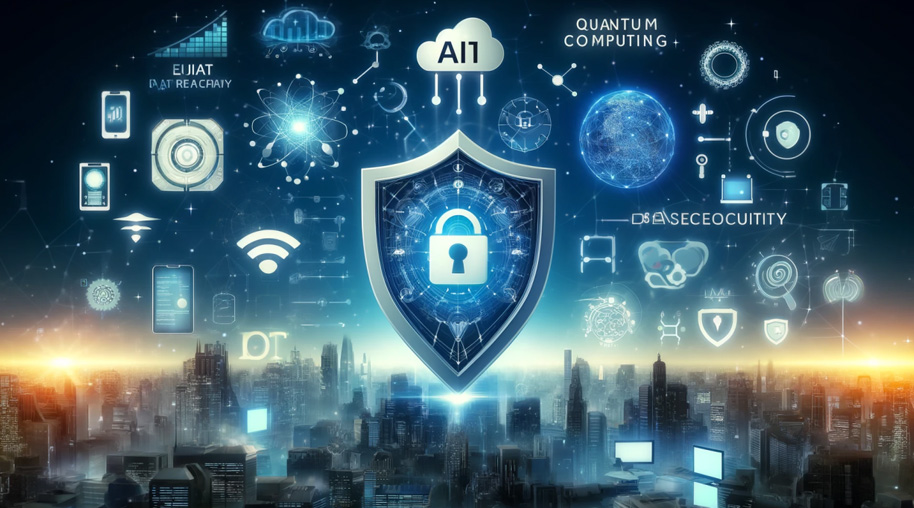The Dynamic Future of Cybersecurity: Trends and Predictions
0 1040
The Dynamic Future of Cybersecurity: Trends and Predictions
Key Takeaways
- Cybersecurity threats are continuously evolving, requiring adaptive strategies.
- Increased reliance on digital infrastructure highlights the importance of robust security measures.
- Emerging technologies such as AI and blockchain significantly enhance security.
- Awareness and education remain essential tools in combating cyber threats.
Emerging Cybersecurity Threats
In today's digital era, cybersecurity has become a critical concern for individuals and organizations. As our dependence on technology intensifies, the avenues for cyber threats widen alarmingly. Statistics indicate that 66% of organizations expect cyber budget growth, reflecting a broad awareness and acknowledgment of the daunting challenges.
This expectation highlights the pressing need for enhanced security measures and underscores the severity of the threats businesses face as they strive to protect their digital assets.
Our modern world witnesses an ever-evolving arsenal employed by cybercriminals. From ransomware - wherein victims face considerable financial loss and operational disruptions due to blocked access to vital systems - to sophisticated phishing schemes designed to steal sensitive data by tricking unsuspecting employees, the threat landscape is continuously morphing.
Our modern world witnesses an ever-evolving arsenal employed by cybercriminals. From ransomware - wherein victims face considerable financial loss and operational disruptions due to blocked access to vital systems - to sophisticated phishing schemes designed to steal sensitive data by tricking unsuspecting employees, the threat landscape is continuously morphing.

Cyber adversaries employ increasingly inventive techniques, meaning organizations must adopt a highly proactive approach to identify and neutralize potential vulnerabilities. The ramifications of neglecting this can range from financial loss, compromised personal information, potential legal penalties, and even irrevocable damage to brand reputation.
Role of Technological Advancements
Amidst the evolving cybersecurity threat landscape, technological advancements have emerged as formidable allies in defending against and preemptively identifying potential threats. Innovations such as artificial intelligence and machine learning have introduced a new level of sophistication in cyber defense strategies.
These technologies enable systems to instantaneously process and understand large volumes of data, identifying irregularities and possible threats before their manifestation as harmful events.
Furthermore, the advent of blockchain technology represents a significant leap forward in data security. Renowned for its decentralized nature, blockchain ensures data integrity, making it an invaluable tool in preventing unauthorized access and fraudulent activities.
Furthermore, the advent of blockchain technology represents a significant leap forward in data security. Renowned for its decentralized nature, blockchain ensures data integrity, making it an invaluable tool in preventing unauthorized access and fraudulent activities.
Blockchain creates a transparent and tamper-proof environment by securing data through a network of algorithms that verify and confirm each transaction.
This technological evolution is crucial in implementing risk management strategies that can withstand and adapt to emerging threats, setting higher benchmarks for data security across industries.
Importance of Education and Awareness
While sophisticated technologies facilitate stronger defenses against cyber threats, education and awareness form the foundation of an effective cybersecurity strategy.
Human error is often identified as a considerable vulnerability within any security network, making continuous education on cybersecurity practices imperative. Organizations can cultivate a security culture by implementing comprehensive training programs that ensure each comprehends their responsibilities in safeguarding digital assets.
Training sessions should cover various essential topics, including recognizing phishing attempts, understanding the necessity of using strong, diversified passwords, and promptly reporting suspected security incidents.
By providing employees with crucial knowledge, organizations can significantly diminish the chances of human error resulting in severe data breaches, thereby strengthening their overall cybersecurity infrastructure against possible threats.
Predictions for the Cybersecurity Landscape
The future cybersecurity landscape is expected to become even more complex and nuanced. Analysts suggest a growing trend towards integrated security solutions that provide comprehensive, multilayered protection across various digital platforms and devices. These systems will ensure that threats are detected, countered as they occur, and predicted before they can escalate into full-scale security breaches.
Predictive analytics may become a cornerstone of cybersecurity strategies in the coming years. Organizations can develop models forecasting potential threats by examining historical data patterns alongside current metrics, allowing for real-time prevention and response.
Embracing such forward-thinking approaches is crucial for staying ahead of cyber adversaries as they continually adapt and develop new threats in a rapidly evolving digital environment.
Building Resilience against Cyber Attacks
Resilience has emerged as a fundamental principle in formulating cybersecurity strategies worldwide. Organizations have acknowledged that a practical defense framework must integrate proactive measures and recovery strategies to maintain business continuity in the face of an attack.
Establishing thorough incident response protocols is essential, as they offer organized procedures for addressing and alleviating the effects of cyber incidents, reducing downtime, and ensuring the continuity of critical service delivery.
In addition to these measures, it is crucial to regularly test and refine system protocols through scenario planning, simulations, and cyber drills. These practices empower organizations to identify weaknesses and improve their overall response mechanisms.
In addition to these measures, it is crucial to regularly test and refine system protocols through scenario planning, simulations, and cyber drills. These practices empower organizations to identify weaknesses and improve their overall response mechanisms.
Furthermore, building resilient infrastructure, such as adopting zero-trust architectures, which limit access to sensitive information based on strict authentication, can significantly reduce potential cyberattack fallout and protect valuable data.
How Collaboration and Regulation Help
Combating cybercrime, a widespread challenge, necessitates collective efforts and collaboration. A concerted approach involving governmental agencies, private sector leaders, and cybersecurity experts is crucial for creating a dynamic ecosystem capable of responding to emerging cyber threats. By sharing expertise, resources, and intelligence on new threat tactics and successful defense strategies, the cybersecurity community can effectively establish the necessary framework to combat cybercrime.
Regulation plays an equally critical role in safeguarding digital environments. By establishing and enforcing clear guidelines and standards, governing bodies ensure organizations maintain rigorous protection measures for sensitive data.
Regulation plays an equally critical role in safeguarding digital environments. By establishing and enforcing clear guidelines and standards, governing bodies ensure organizations maintain rigorous protection measures for sensitive data.
This safeguards consumer interests and establishes a universal benchmark for cybersecurity practices, eliciting compliance and enabling a unified response to the evolving threat landscape.
Together, collaboration and regulation provide a foundation upon which a more secure digital landscape can be built.
Summary of Key Insights
The future of cybersecurity holds both challenges and opportunities for enhancement and innovation. As technology continually integrates into every facet of society, recognizing and addressing the dynamics of cybersecurity becomes paramount.
By embracing a collaborative, informed, and adaptive approach that combines cutting-edge technologies, human vigilance, and regulatory frameworks, we can navigate the complexities of the digital era with confidence and security.
Continuous evolution and innovation will be essential to protect against the nuanced threats of tomorrow, preserving our digital future.

Share:







Comments
Waiting for your comments